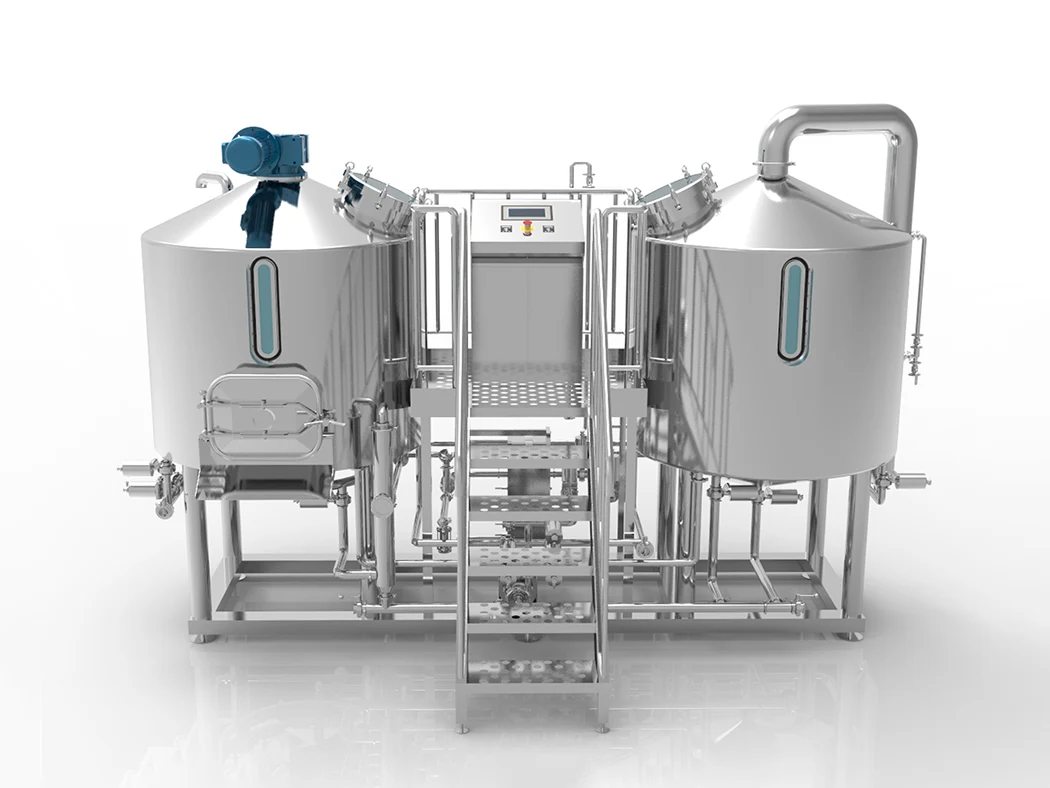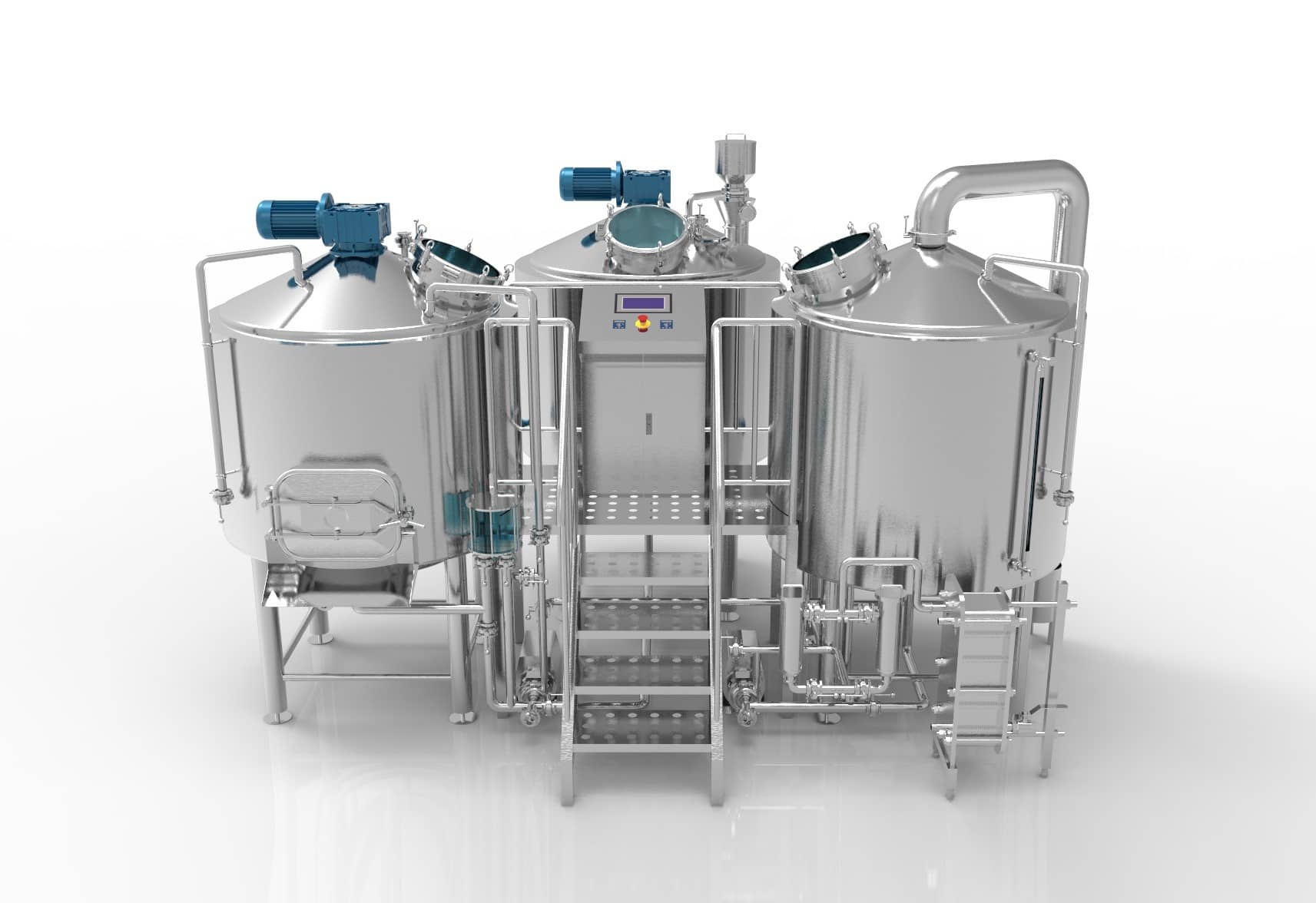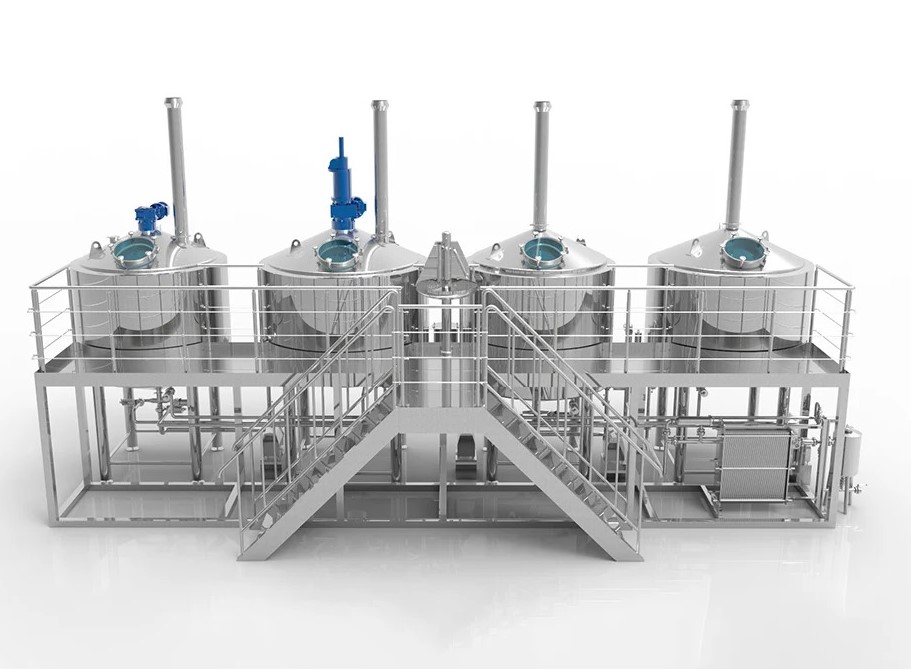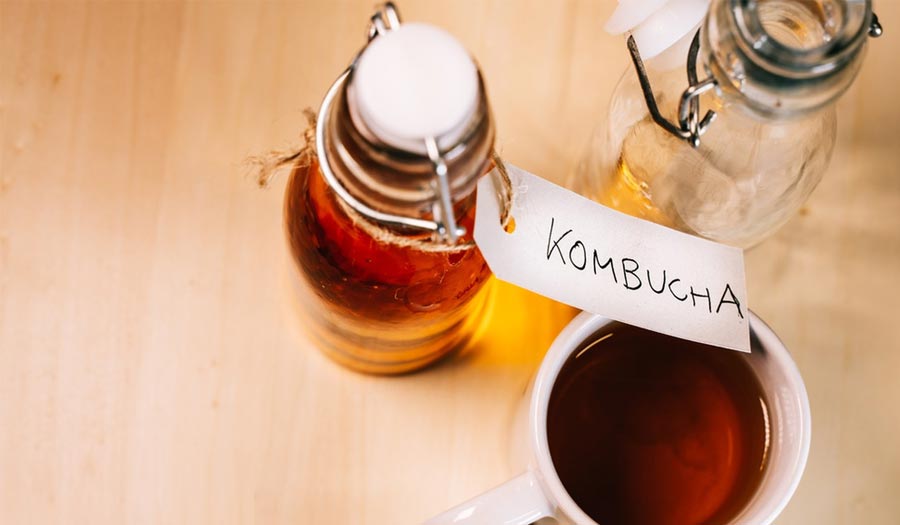Kombucha brewers often struggle with inconsistent batches, contamination, and poor fermentation results—especially when using basic jars or low-quality containers. These challenges grow with batch size and can undermine both flavor and safety.
A kombucha fermenter is a specialized brewing vessel designed to hold and ferment kombucha tea in controlled conditions, helping brewers maintain temperature, prevent contamination, and scale production from homebrew to commercial use.
What Is a Kombucha Fermenter and Why Is It Essential?
A kombucha fermenter is a vessel used to hold sweet tea mixed with a scoby during the fermentation process. This vessel is the core of every successful kombucha brew, ensuring stable conditions for healthy bacteria and yeast to thrive.
Unlike regular containers, kombucha fermenters are engineered for:
-
Food-grade safety (glass, plastic, or stainless steel)
-
Support for airlock or valve integration
-
Easy cleaning and contamination prevention
-
Batch sizing flexibility from 1 gallon to 7 gallons or more
-
Tight sealing options to avoid exposure to oxygen and pests
The right fermenter can mean the difference between a smooth, fizzy, delicious kombucha and a failed or vinegary mess. For commercial kombucha production, choosing a conical fermenter with a bottom valve for sediment removal becomes critical.
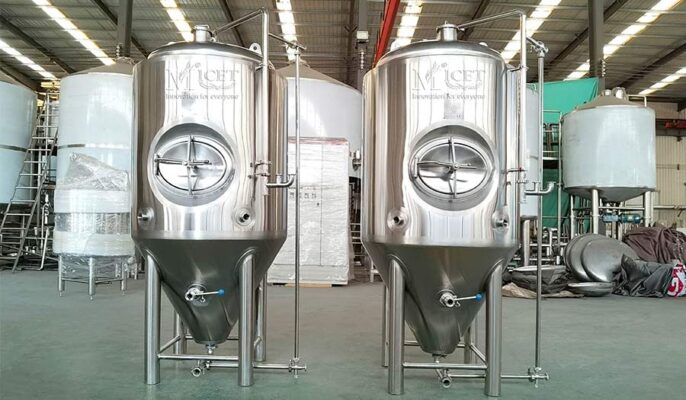
What Sizes of Kombucha Fermenters Are Available?
La scelta the right fermenter size depends on how much kombucha you want to brew per batch. From 3 gallon glass jars to 50-gallon stainless steel fermenting tanks, there’s a fermenter for every brewer—from DIY home users to beverage brands.
| Dimensione | Ideal For | Common Features |
|---|---|---|
| 1–3 Gallon | Homebrewers, beginners | Glass jar, breathable cover or airlock |
| 5 Gallon | Intermediate brewers | Food-grade plastic bucket or glass jar |
| 7 Gallon | Frequent brewers, small batches | Valve, lid, thermometer compatible |
| 10+ Gallon | Small business, commercial setup | Stainless steel tank, tap, digital thermometer |
A 5 gallon kombucha fermenter is one of the most popular choices. It offers enough volume to experiment with flavoring, ginger additions, and secondary fermentation while being manageable in most home kitchens.
Glass Jar vs Stainless Steel Kombucha Fermenters: Which One Is Better?
Both glass and stainless steel fermenters are widely used for kombucha fermenting, and each comes with pros and cons.
Barattolo di vetro
-
Transparent: Easy to monitor pellicle growth
-
Affordable: Great for diy and homebrewers
-
Compatible with swing top bottles and straining bags
However, glass jars can break, don’t have built-in valves, and can be hard to scale with.
Stainless Steel Tank
-
Easy to clean, sanitize, and prevent contamination
-
Highly durable and professional-grade
-
Often includes lid, valve, and tap
-
Compatible with heating sleeves and fermentation temperature controllers
Though pricier, a stainless steel kombucha fermenter offers a more efficient experience, especially for larger batch or commercial brewing kombucha operations. The interior is non-reactive and easy to sterilize between batches.
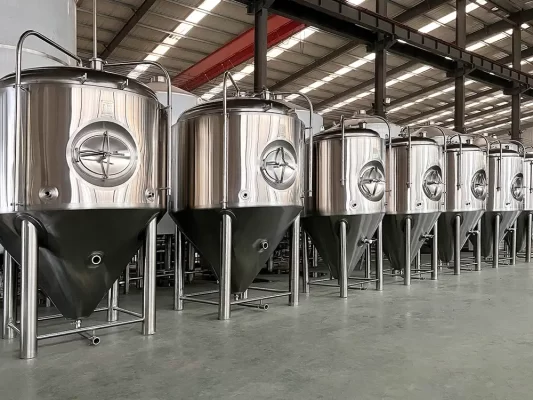
What Features Should You Look For in a Kombucha Fermenter?
When evaluating a kombucha brewing fermenter, the right accessories and design features make a huge difference.
Key features include:
-
Airlock or breathable lid to allow CO2 release
-
Spigot or valve for easy transfer of kombucha without disturbing the scoby
-
Wide-mouth opening for adding ginger, lemon, or removing the pellicle
-
Compatibility with thermometer probes, pH strip slots, or heating sleeves
Some fermenters now include:
-
Digital thermometer with temperature range sensors
-
Built-in filter or strainer at the tap
-
Food-grade seal to keep dust and pests out
If you’re scaling, choosing a fermenter that is SS Brewtech-compatible or supports clean-in-place (CIP) systems can significantly reduce cleaning time.
How Does Batch Size Affect Fermentation Results?
Small versus large batches of kombucha ferment differently due to heat retention, oxygen exposure, and yeast activity.
-
Small batches (1 to 3 gallons) tend to ferment quicker but are more vulnerable to environmental temperature swings.
-
Large batches (5 gallons and above) maintain more thermal stability and allow kombucha flavoring and experimentation across portions.
It’s important to keep a thermometer or even a fermentation controller for batches over 5 gallons, especially in cooler climates. Some brewers use heat mats or fermentation chambers to manage ambient conditions and ensure consistent results.
How to Control Fermentation Temperature and pH?
Consistent fermentation depends heavily on the control of both temperature and acidity. Most kombucha ferments best between 22°C and 28°C (71°F to 82°F), and the optimal pH should drop to between 2.5 and 3.5 within a few days.
A high-quality kombucha fermenter supports this control by allowing:
-
Easy integration of digital thermometer or analog temperature strip
-
Compatibility with heat mats or fermentation heaters
-
Space to insert pH strips for real-time monitoring
Measuring and maintaining these values is essential to avoiding issues like slow fermentation or harmful bacteria growth. Commercial setups often rely on temperature-controlled stainless steel tanks with automated regulators for batch stability.
For beginner homebrewers, even a simple 5 gallon vessel can be monitored using stick-on thermometer strips and routine testing with low-cost pH meters.
What Accessories Improve Fermentation Success?
Accessories may seem optional at first, but they play a key role in producing clean, consistent kombucha. Investing in the right brewing supplies can simplify your workflow and improve product quality.
Here are some of the most useful add-ons:
-
Straining bag: To contain large tea leaves or fruit solids during flavoring
-
Spigot with valve: For transferring kombucha without disturbing the pellicle
-
Camera di compensazione: Allows CO2 to escape while preventing oxygen and contamination
-
Glass jar cover or breathable cloth: Crucial for small-batch brewers
-
Termometro digitale: For exact temperature tracking inside the vessel
-
Tap or dispenser: For bottling with minimal air exposure
Many of these items are bundled in a kombucha brewing kit, which can be ideal for small-scale or startup kombucha makers. For larger volumes, stainless steel fermenters often come pre-equipped with a lid, valve, and thermometer port.
How to Prevent Contamination in Larger Kombucha Batches?
As batch size increases, so does the risk of unwanted microbial contamination. Improper sanitation, exposure to open air, or inconsistent temperatures can all compromise your kombucha.
Best practices include:
-
Always sanitize fermenters, lids, and any tools before and after use
-
Avoid using containers with scratches or grooves where bacteria can hide
-
Use a clean cloth or food-grade seal to cover the fermenter when not using an airlock
-
Keep the fermentation area free of dust, insects, and temperature fluctuations
-
Never use metal lids that may react with the acidic kombucha liquid

Larger operations often use CIP-capable tanks or stainless fermenters with built-in cleaning systems. These can help reduce manual cleaning time while improving consistency between batches.
Domande frequenti
What size kombucha fermenter should I start with?
If you’re brewing at home, a 3 to 5 gallon fermenter is perfect. It allows you to test recipes and build experience without risking large batch losses.
Can I use a beer brewing bucket to ferment kombucha?
Yes, as long as it’s made of food-grade plastic or stainless steel and cleaned thoroughly. However, kombucha has its own needs and flavors, so separate gear is usually better.
Why is a spigot or valve helpful on a fermenter?
Valves allow you to extract finished kombucha without disturbing the scoby layer on top. This keeps your starter healthy and your brew clean.
Do I need to monitor temperature and pH?
Absolutely. Temperature and pH directly affect the safety, flavor, and fizz of your kombucha. Use a thermometer and pH strips regularly.
What material is best for a kombucha fermenter?
Stainless steel is ideal for professional use. Glass is great for beginners. Avoid porous plastic or containers that may absorb odors or bacteria.
Can one fermenter be used for multiple kombucha batches?
Yes, but ensure proper sanitation between batches. Also, always keep some starter liquid and a healthy scoby for your next brew.
Summary of Key Points
-
Kombucha fermenters are purpose-built vessels used to brew kombucha tea under controlled, clean conditions.
-
Sizes range from 1 gallon to over 50 gallons. Homebrewers often start with glass or food-grade plastic. Commercial setups use stainless steel tanks.
-
Stainless steel fermenters are easier to clean, more durable, and compatible with accessories like valves, thermometers, and airlocks.
-
Consistency in fermentation requires monitoring temperature and pH, using quality tools and maintaining cleanliness at every step.
-
Accessories like spigots, airlocks, and digital thermometers enhance brewing efficiency and help prevent contamination.
Get Started with Your Kombucha Brewing Journey
If you are starting a new kombucha brand or looking to expand your current setup, choosing the right fermenter is a critical decision. As a professional manufacturer of kombucha and brewing equipment, we help brands scale production efficiently with customizable equipment, technical support, and international service.
Reach out to our team today to get a quote on kombucha fermenters that fit your batch size, layout, and brewing style. We’re ready to support your growth from concept to final product.

